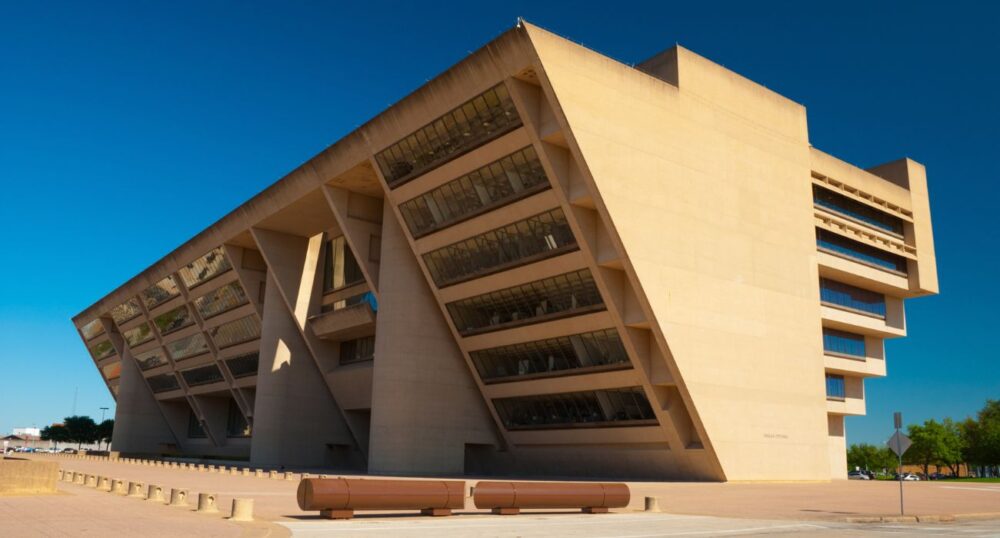The Dallas City Council held a committee briefing on Wednesday to discuss the latest developments regarding the city’s “Vision Zero” road safety initiative.
“Vision Zero,” passed by the City Council in 2019, lays out a strategy to eliminate traffic fatalities entirely and reduce severe traffic-related injuries by 50% by 2030.
The “Vision Zero” Action Plan approved in 2022 works off of the Safe System Approach that targets four components: safe roads, safe speeds, safety-conscious road users, and safe vehicles. The goal is to prevent collisions while also assuring that, if collisions do occur, road users will not be seriously injured. The plan acknowledges that humans will make mistakes, so the approach places more responsibility on the system designers and less on the individual road users.
However, the plan’s progress came into question following a February city council briefing where Department of Transportation Director Ghassan Khankarli declined to say how many action items on the “Vision Zero” progress report had been completed.
As council members expressed frustration with the lack of information provided, Khankarli replied that his team would be able to provide additional information in March concerning the work that has been done.
Khankarli showed up at Wednesday’s briefing with a detailed, 67-slide presentation, prepared to provide long-awaited answers to council members’ questions about “Vision Zero.”
He noted factors out of the department’s control, such as the coronavirus pandemic, a tornado, and supply chain interruptions that have led to slowdowns along the way.
Khankarli presented key data points the Department of Transportation has discovered in its research, such as pinpointing a High Injury Network (HIN) for “Vision Zero” to target. According to the department’s research, 57% of severe crashes in Dallas have occurred on 7% of the city’s streets. The HIN highlights areas where safety education and infrastructure improvements are urgently needed.
Khankarli emphasized that while research studies provide crucial information, they require extensive time to conduct. From the initial request for a proposal to city council approval to conducting the study to obtaining an internal review of the draft report can take 17-24 months. This is for one study alone.
“We don’t have the internal capacity for us to undertake large corridor studies,” Khankarli said at the briefing, explaining that a study that would normally take six months to produce now requires 10 months to a year to complete in order to comply with regulations.
In addition to time constraints, Khankarli’s team has also faced budgeting issues.
One feature of “Vision Zero” is the implementation of more traffic signals to create safer roadways. However, Khankarli said this initiative has been hampered by rising costs, noting the cost of traffic signals is now 50% higher than originally estimated. As costs continue to rise, contractors are taking longer to complete projects.
“It’s not like we’re not doing anything, or we’re not progressing things,” said Khankarli. “It’s just that the nature of the market is posing such a major challenge on the resources, and taxing the resources on the contractor’s side as we move forward.”
While federal funds have been allocated towards “Vision Zero,” Khankarli said it’s an average of two years from when he is notified of the fund before his team can access those funds.
He discussed other ongoing projects, such as the use of artificial intelligence to help gather information on traffic habits.
Many council members applauded Khankarli on his detailed report, contrasting his report from the February briefing.
“I really liked your candid explanations on what you can and can’t do,” said Council Member Chad West (District 1).
“I see the biggest reason for crashes in speed,” said Council Member Paula Blackmon (District 9), citing data that shows speed-related factors were the top contributing cause for crashes between 2015 and 2023.
“Speeders are speeders; I don’t know if a 5 mph reduction on a speed limit will make them slow down or just make that ticket sting a bit more,” added Council Member Gay Donnell Willis (District 13) in response to Khankarli’s residential speed reduction proposal.
Willis emphasized the need for law enforcement to crack down on erratic driving behavior.
Council Member Paul Ridley (District 14) also called for increased law enforcement, stating that there is a widespread perception that there is no traffic enforcement anymore. “There’s an epidemic of red-light running,” he said.
Chief of Police Eddie Garcia responded to the council member’s comments, citing the lack of staff within the Dallas Police Department.
“We’re doing the best we can with what we have,” he said, noting that the priority will always be targeting violent crime.
As The Dallas Express has reported, DPD is laboring under a longstanding and severe staffing shortage. The department has only around 3,000 police officers, a far cry from the estimated 4,000 necessary to maintain public safety.
Dallas City Council budgeted just $654 million for public safety this fiscal year, much less than what other high-crime jurisdictions like Chicago, Los Angeles, and New York City allocate to their police departments.

